Drug abuse remains a pressing public health crisis in the United States and around the world. Certain substances are particularly dangerous because of their high potential for abuse, dependence, and long-term harm. These substances not only pose a significant risk to physical and mental health but also contribute to widespread social and economic issues.
At River Rocks Recovery, we believe that understanding these substances, their risks, and the importance of seeking help is the first step toward recovery. Our evidence-based programs, such as the Addiction Treatment Program, Partial Hospitalization Program, Intensive Outpatient Program, and Sober Living Program, provide individuals with the support they need to regain control of their lives.
This blog will explore the drugs with the highest potential for abuse, the dangers they pose, and how individuals can find the help they need.
What Defines a Drug’s Potential for Abuse?
The potential for abuse varies widely across different substances, depending on their chemical makeup, effects on the brain and body, and societal factors. To better understand why certain drugs are more likely to be abused than others, we need to consider several key factors:
1. Euphoria and Reward Response
Many drugs that are highly addictive produce intense feelings of euphoria, also known as a “high.” This is typically caused by the drug’s impact on the brain’s reward system, particularly through the release of dopamine.
- How It Works: Dopamine, a neurotransmitter associated with pleasure and reward, is released in high quantities when using certain substances. This flood of dopamine reinforces the desire to use the drug again.
- Example: Drugs like cocaine and methamphetamine produce a rapid and overwhelming release of dopamine, creating a strong incentive for repeated use.
2. Speed of Onset
Drugs that take effect quickly are more likely to be abused because the user experiences immediate gratification.
- Fast-Acting Drugs: Substances like crack cocaine or heroin produce effects within seconds when smoked or injected, creating an intense and immediate high.
- Why This Matters: The faster the drug takes effect, the more likely individuals are to seek that experience repeatedly, increasing the risk of addiction.
3. Development of Tolerance and Dependence
Tolerance occurs when an individual needs increasingly larger doses of a drug to achieve the same effect. Dependence develops when the body or brain becomes reliant on the substance to function normally.
- Physical Dependence: The body adjusts to the presence of the drug, leading to withdrawal symptoms when the drug is not used.
- Psychological Dependence: The individual becomes emotionally or mentally reliant on the drug to cope with stress, anxiety, or other emotions.
- Example: Prescription opioids like oxycodone and hydrocodone can lead to tolerance and dependence even when used as prescribed, which increases the risk of misuse.
4. Withdrawal Symptoms
The severity of withdrawal symptoms plays a major role in a drug’s potential for abuse.
- Why This Happens: Withdrawal occurs when the drug leaves the body, and the individual experiences physical and emotional discomfort.
- Examples of Withdrawal Symptoms:
- Opioids: Flu-like symptoms, muscle pain, and severe cravings
- Alcohol: Tremors, seizures, and in severe cases, delirium tremens
- Benzodiazepines: Anxiety, insomnia, and life-threatening seizures
- Impact on Abuse: To avoid the discomfort of withdrawal, individuals may continue using the drug, even if they want to stop.
5. Availability and Social Acceptability
Drugs that are readily available or socially normalized are often more likely to be abused.
- Legal Substances: Alcohol and prescription medications are widely available and socially acceptable, contributing to their high rates of misuse.
- Illicit Substances: Drugs like methamphetamine and heroin may not be socially acceptable but are easily obtained in certain communities, increasing their abuse potential.
6. Cost and Accessibility
The affordability of a drug can also determine its abuse potential.
- Low-Cost Drugs: Substances like methamphetamine and heroin are often inexpensive and therefore more accessible to individuals with limited financial resources.
- Counterfeit Drugs: The rise of counterfeit pills containing fentanyl has made highly addictive and dangerous substances more accessible, often without users realizing the risks involved.
Drugs with the Highest Potential for Abuse
1. Opioids
Opioids, both prescription and illicit, are among the most dangerous substances due to their powerful effects on pain relief and euphoria. These drugs act on the brain’s opioid receptors, reducing pain and creating a sense of well-being.
Commonly Abused Opioids:
- Prescription medications like oxycodone (OxyContin), hydrocodone (Vicodin), morphine, and codeine
- Synthetic opioids such as fentanyl
- Illicit opioids like heroin
Risks of Opioid Abuse:
- Overdose: Opioids slow breathing, and overdose can lead to respiratory failure and death.
- Addiction: Chronic use rewires the brain, leading to physical and psychological dependency.
- Withdrawal Symptoms: Symptoms like nausea, muscle pain, and intense cravings make quitting difficult.
Treatment Options:
At River Rocks Recovery, our Opiate Rehab Treatment program offers medically supervised detox, counseling, and long-term support to address the challenges of opioid addiction.
2. Methamphetamine (Meth)
Methamphetamine, a potent stimulant, delivers an intense and prolonged high by flooding the brain with dopamine. This sudden surge creates a euphoric “rush” that leads to compulsive use.
Why Meth is Addictive:
- Meth provides a powerful and immediate euphoric effect.
- It alters brain chemistry, reducing the natural production of dopamine over time and creating a cycle of dependency.
Risks of Meth Abuse:
- Physical Damage: Meth use causes severe dental issues (“meth mouth”), weight loss, and skin sores.
- Mental Health Issues: Chronic use can result in paranoia, aggression, and hallucinations.
- Addiction: Meth addiction is particularly hard to overcome due to the long-lasting changes it creates in the brain.
Treatment Options:
Our Meth Rehab Treatment program includes cognitive-behavioral therapy, group counseling, and personalized care to address both the physical and psychological aspects of addiction.
3. Cocaine
Cocaine is a powerful stimulant derived from the coca plant. It produces short-lived bursts of energy and euphoria, making it highly addictive.
Why Cocaine is Addictive:
- Cocaine triggers a rapid release of dopamine, creating an intense high.
- Its effects are short-lived, leading to repeated use in quick succession.
Risks of Cocaine Abuse:
- Heart Problems: Cocaine increases heart rate and blood pressure, leading to heart attacks and strokes.
- Behavioral Risks: Users often exhibit erratic or dangerous behavior.
- Addiction: Dependency develops quickly due to the drug’s powerful effects on the brain’s reward system.
Treatment Options:
Our Drug Rehab Treatment program focuses on helping individuals recover from cocaine addiction through therapy, education, and life skills training.
4. Alcohol
Although legal and socially accepted, alcohol is one of the most widely abused substances. Its accessibility and role in social settings often mask its dangers.
Why Alcohol is Addictive:
- Alcohol creates feelings of relaxation and reduced stress.
- Over time, individuals develop tolerance and dependency.
Risks of Alcohol Abuse:
- Liver Damage: Chronic drinking leads to conditions like cirrhosis and liver failure.
- Mental Health Issues: Alcohol is closely linked to anxiety, depression, and other mood disorders.
- Addiction: Many individuals require structured support, such as our Alcohol Rehab Treatment program, to overcome alcohol dependency.
5. Benzodiazepines
Commonly prescribed for anxiety and insomnia, benzodiazepines like Xanax, Valium, and Ativan have a high potential for abuse due to their calming effects.
Why Benzodiazepines are Addictive:
- They provide immediate relief from anxiety, which can lead to overuse.
- Prolonged use causes physical dependence, with severe withdrawal symptoms.
Risks of Abuse:
- Overdose: When combined with other depressants like alcohol, benzodiazepines can cause fatal respiratory depression.
- Memory and Cognitive Impairment: Long-term use affects the brain’s ability to function properly.
Treatment Options:
Our programs, including Partial Hospitalization Programs and Intensive Outpatient Programs, provide structured care to safely detox and recover from benzodiazepine dependency.
6. Heroin
Heroin is an illegal opioid with one of the highest potentials for abuse and dependency.
Why Heroin is Addictive:
- It delivers a powerful euphoric high almost immediately.
- Users develop tolerance quickly, requiring larger doses to achieve the same effects.
Risks of Heroin Abuse:
- Overdose: Heroin often causes respiratory failure, especially when laced with fentanyl.
- Disease Transmission: Sharing needles increases the risk of contracting HIV and hepatitis.
Treatment Options:
Our Opiate Rehab Treatment program combines medical care, counseling, and aftercare planning to support long-term recovery.

Recognizing the Need for Help
If you or a loved one is struggling with substance abuse, it’s important to recognize the signs and seek help early.
Behavioral Indicators:
- Neglecting responsibilities or relationships
- Engaging in risky or criminal behavior
- Social withdrawal or isolation
Physical Symptoms:
- Drastic changes in appearance or hygiene
- Unexplained weight loss or health issues
- Symptoms of withdrawal, such as sweating, shaking, or nausea
Emotional and Psychological Signs:
- Increased anxiety, depression, or irritability
- Paranoia or hallucinations
- Intense cravings or obsession with obtaining the drug
Recognizing the Need for Help
Acknowledging the need for help is often the most challenging step in the journey to recovery. Addiction is a complex condition that affects not only the individual but also their relationships, career, and overall well-being. Recognizing the signs of substance abuse can help individuals or their loved ones take the first step toward seeking professional care.
1. Behavioral Changes
Behavioral changes are often the earliest and most noticeable signs of addiction.
- Neglecting Responsibilities: Missing work, school, or family obligations due to substance use.
- Risky Behavior: Driving under the influence, unsafe sexual activity, or criminal behavior.
- Secrecy or Isolation: Avoiding loved ones or lying about drug or alcohol use.
2. Physical Symptoms
The physical toll of addiction can be significant and, in some cases, life-threatening.
- Changes in Appearance: Rapid weight loss or gain, poor hygiene, and bloodshot eyes.
- Health Problems: Frequent illnesses, unexplained injuries, or withdrawal symptoms like sweating, shaking, or nausea.
- Drug-Specific Signs:
- Opioids: Pinpoint pupils and drowsiness
- Methamphetamine: Skin sores and tooth decay (“meth mouth”)
- Alcohol: Slurred speech and unsteady gait
3. Emotional and Mental Health Struggles
Substance use often exacerbates existing mental health conditions or creates new ones.
- Mood Swings: Rapid shifts between euphoria, anger, sadness, or anxiety.
- Paranoia or Hallucinations: Experiencing distorted perceptions or irrational fears.
- Increased Anxiety or Depression: Turning to drugs or alcohol as a coping mechanism for emotional pain.
4. Social and Financial Consequences
Addiction often disrupts personal relationships and financial stability.
- Strained Relationships: Conflicts with loved ones over behavior or substance use.
- Job Loss or Financial Issues: Poor performance at work or spending large amounts of money on drugs or alcohol.
5. Legal Troubles
Substance abuse often leads to legal issues, such as arrests for driving under the influence (DUI), possession of drugs, or public intoxication. These situations are red flags that addiction has reached a critical level.
How to Take the First Step
Acknowledging the problem is the hardest part, but seeking help can transform lives. At River Rocks Recovery, we provide compassionate care tailored to each individual’s needs:
- Addiction Treatment Program: A comprehensive approach addressing the root causes of addiction.
- Partial Hospitalization Program (PHP): Structured and intensive care for individuals who need close monitoring without full hospitalization.
- Intensive Outpatient Program (IOP): Flexible treatment that allows individuals to balance recovery with work or family commitments.
- Outpatient Program: Continued therapy and support for long-term sobriety.
- Sober Living Program: A supportive environment for those transitioning back to independent living.
How River Rocks Recovery Can Help
At River Rocks Recovery, we offer a variety of evidence-based treatment programs designed to address the unique challenges of substance abuse:
- Addiction Treatment Program: A comprehensive approach focusing on physical, mental, and emotional recovery.
- Partial Hospitalization Program (PHP): Structured, intensive care for those in early recovery stages.
- Intensive Outpatient Program (IOP): Flexible treatment options for individuals balancing recovery with daily life.
- Outpatient Program: Continued support and therapy for long-term sobriety.
- Sober Living Program: A safe, supportive environment for individuals transitioning back to independent living.
Our team provides personalized care, incorporating therapy, life skills training, and relapse prevention strategies to empower individuals in their recovery journey.
Conclusion
If you or someone you know is struggling with addiction, don’t wait to seek help. River Rocks Recovery offers compassionate, professional support to help individuals reclaim their lives from substance abuse.
Call us today at (888) 905-6281 to learn more about our programs and begin your path to lasting sobriety. Recovery is possible, and we’re here to help you every step of the way.
FAQ for Drugs with the Highest Potential for Abuse
What makes a drug have a high potential for abuse?
A drug’s potential for abuse depends on its ability to create euphoria, how quickly it takes effect, its capacity to cause tolerance and dependence, and the severity of withdrawal symptoms. Drugs that are widely available or socially normalized are also more likely to be abused.
Which drugs have the highest potential for abuse?
The most addictive drugs include opioids (e.g., heroin, fentanyl, oxycodone), methamphetamine, cocaine, alcohol, benzodiazepines, and heroin. Each poses unique risks to physical and mental health.
What are the risks of abusing these drugs?
Risks vary by substance but may include overdose, organ damage, mental health issues, addiction, and withdrawal symptoms. Polysubstance use, such as combining alcohol with drugs, amplifies these risks.
How can I recognize the signs of addiction?
Behavioral changes, neglect of responsibilities, withdrawal from loved ones, physical symptoms like weight loss or poor hygiene, and emotional struggles such as anxiety or depression are common signs.
What treatments are available for drug addiction?
River Rocks Recovery offers tailored programs, including Addiction Treatment Programs, Partial Hospitalization Programs, Intensive Outpatient Programs, and Sober Living Programs, designed to address addiction’s physical, emotional, and mental aspects.










